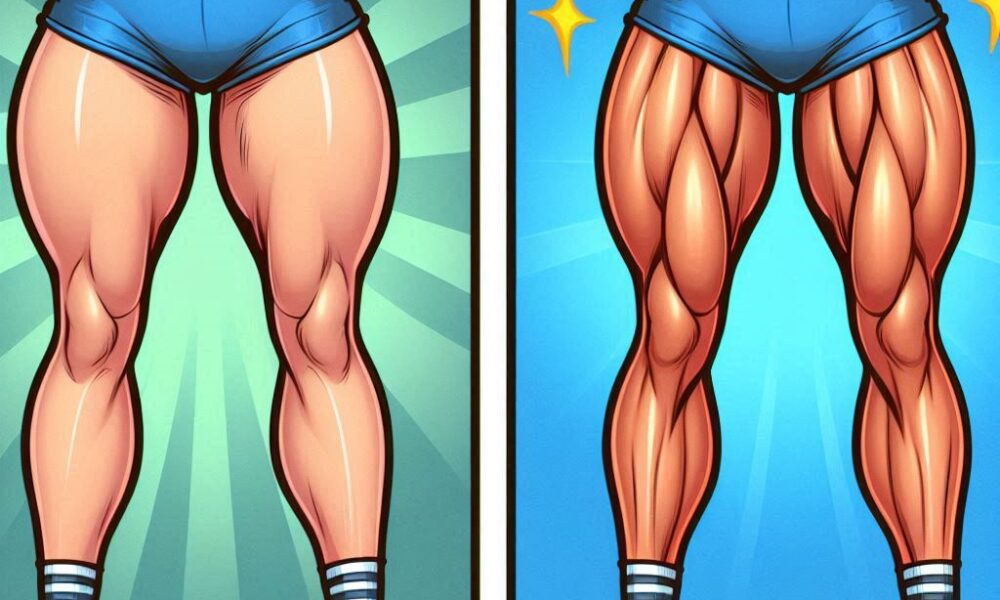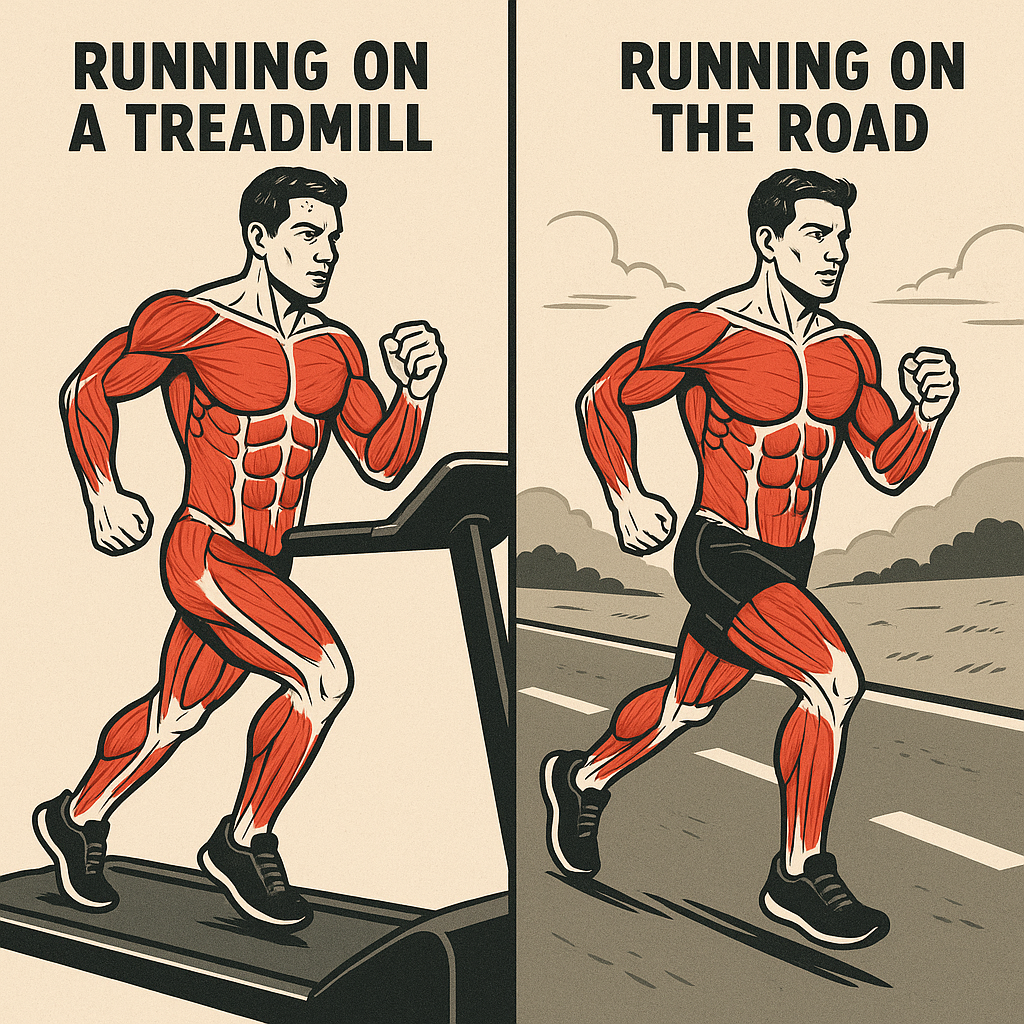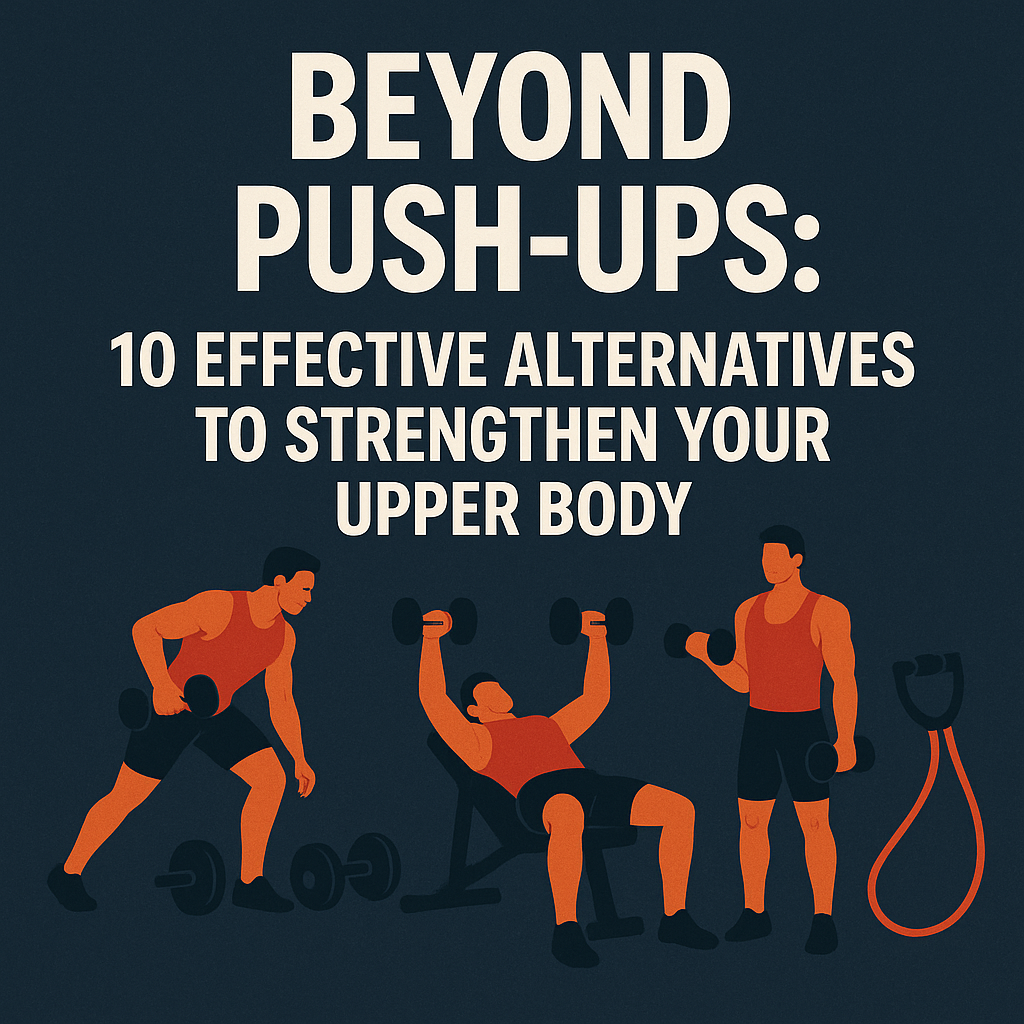Introduction:
Why Strong, Toned Thighs Matter
When it comes to physical fitness, many of us focus on building strong, toned muscles in our arms, chest, and core. But there’s one area of the body that often gets overlooked, despite its importance for our overall health and well-being: the thighs.
Having strong, toned thighs is essential for maintaining good overall health, improving athletic performance, and enhancing our appearance. In this post, we’ll explore the benefits of toning the thighs and provide effective exercises for achieving stronger, leaner thighs.
The Importance of Strong, Toned Thighs
Strong, toned thighs are essential for maintaining good overall health. Here are just a few reasons why:
Improved mobility: Strong thighs enable us to move more easily and freely, whether we’re walking, running, or engaging in other physical activities.
Better balance and coordination*: Toned thighs help us maintain better balance and coordination, reducing our risk of falls and injuries.
Enhanced athletic performance: Strong thighs are essential for many sports and physical activities, including soccer, basketball, and cycling.
The Benefits of Toning the Thighs
Toning the thighs offers numerous benefits, including:
Improved appearance: Toned thighs can help us look and feel more confident and attractive.
Increased strength and endurance*: Toning the thighs can help us build strength and endurance, making it easier to engage in physical activities.
Better overall health: Toning the thighs can help us maintain better overall health, reducing our risk of chronic diseases like heart disease and diabetes.
The Purpose of This Post
In this post, we’ll provide effective exercises for toning the thighs, including bodyweight exercises, resistance band exercises, and weightlifting exercises. We’ll also offer tips and advice for getting the most out of your thigh-toning workouts.
Whether you’re looking to improve your athletic performance, enhance your appearance, or simply maintain better overall health, this post will provide you with the tools and knowledge you need to achieve stronger, leaner thighs. So let’s get started!
Understanding the Muscles of the Thighs: A Guide to Anatomy and Toning
Before we dive into the exercises and workouts for toning the thighs, it’s essential to understand the anatomy of the thigh muscles. The thighs are composed of three main muscle groups: the quadriceps, hamstrings, and adductors. Each of these muscle groups plays a vital role in maintaining strength, flexibility, and balance in the thighs.
The Quadriceps
The quadriceps are a group of four muscles located on the front of the thigh. These muscles are responsible for:
Knee extension: The quadriceps help to straighten the knee joint, making it possible to stand, walk, and run.
Hip flexion: The quadriceps also help to flex the hip joint, making it possible to lift the knee and move the leg forward.
The quadriceps are composed of four muscles:
Rectus femoris: This muscle is located on the front of the thigh and is responsible for knee extension and hip flexion.
Vastus lateralis: This muscle is located on the outer aspect of the thigh and is responsible for knee extension and hip flexion.
Vastus medialis: This muscle is located on the inner aspect of the thigh and is responsible for knee extension and hip flexion.
Vastus intermedius: This muscle is located deep within the thigh and is responsible for knee extension and hip flexion.
The Hamstrings
The hamstrings are a group of three muscles located on the back of the thigh. These muscles are responsible for:
Knee flexion: The hamstrings help to bend the knee joint, making it possible to sit, squat, and climb stairs.
Hip extension: The hamstrings also help to extend the hip joint, making it possible to stand and walk.
The hamstrings are composed of three muscles:
Biceps femoris: This muscle is located on the back of the thigh and is responsible for knee flexion and hip extension.
Semitendinosus: This muscle is located on the back of the thigh and is responsible for knee flexion and hip extension.
Semimembranosus: This muscle is located on the back of the thigh and is responsible for knee flexion and hip extension.
The Adductors
The adductors are a group of five muscles located on the inner aspect of the thigh. These muscles are responsible for:
Hip adduction: The adductors help to bring the legs together, making it possible to stand, walk, and run.
The adductors are composed of five muscles:
Adductor magnus: This muscle is located on the inner aspect of the thigh and is responsible for hip adduction.
Adductor longus: This muscle is located on the inner aspect of the thigh and is responsible for hip adduction.
Adductor brevis: This muscle is located on the inner aspect of the thigh and is responsible for hip adduction.
Pectineus: This muscle is located on the inner aspect of the thigh and is responsible for hip adduction.
Gracilis: This muscle is located on the inner aspect of the thigh and is responsible for hip adduction.
The Importance of Targeting All Three Muscle Groups
Targeting all three muscle groups – the quadriceps, hamstrings, and adductors – is essential for achieving balanced toning in the thighs. Here’s why:
Prevents muscle imbalances: Targeting all three muscle groups helps to prevent muscle imbalances, which can lead to injuries and poor posture.
Improves overall strength and flexibility: Targeting all three muscle groups helps to improve overall strength and flexibility in the thighs, making it easier to perform everyday activities and sports.
Enhances athletic performance: Targeting all three muscle groups helps to enhance athletic performance by improving power, speed, and agility.
By understanding the anatomy of the thigh muscles and targeting all three muscle groups, you’ll be able to achieve stronger, leaner thighs that will enhance your overall health, fitness, and athletic performance. In the next section, we’ll explore the best exercises for toning the thighs.
Toning Exercises for the Thighs
Now that we’ve covered the anatomy of the thigh muscles, it’s time to dive into the best exercises for toning the thighs. In this section, we’ll explore bodyweight exercises, resistance band exercises, and weightlifting exercises that target the quadriceps, hamstrings, and adductors.
Section 1: Bodyweight Exercises
Bodyweight exercises are a great way to tone the thighs without any equipment. Here are some of the most effective bodyweight exercises for toning the thighs:
Squats
1. Stand with your feet shoulder-width apart: Stand with your feet shoulder-width apart, toes facing forward or slightly outward.
2. Lower your body down into a squat: Lower your body down into a squat, keeping your back straight and your knees behind your toes.
3. Push through your heels to return to standing: Push through your heels to return to standing, squeezing your quadriceps and glutes at the top of the movement.
Lunges
1. Stand with your feet together: Stand with your feet together, take a large step forward with one foot.
2. Lower your body down into a lunge: Lower your body down into a lunge, keeping your front knee behind your toes and your back knee almost touching the ground.
3. Push through your front heel to return to standing: Push through your front heel to return to standing, squeezing your quadriceps and glutes at the top of the movement.
Leg Raises
1. Lie on your back with your arms at your sides: Lie on your back with your arms at your sides, lift one leg up towards the ceiling.
2. Lower your leg back down to the starting position: Lower your leg back down to the starting position, repeating with the other leg.
Wall Sits
1. Stand with your back against a wall: Stand with your back against a wall, slide down into a seated position with your knees bent at a 90-degree angle.
2. Hold for 30 seconds to 1 minute: Hold for 30 seconds to 1 minute, rest for 30 seconds to 1 minute before repeating.
Section 2: Resistance Band Exercises
Resistance band exercises are a great way to add some extra challenge to your thigh workouts. Here are some of the most effective resistance band exercises for toning the thighs:
Banded Squats
1. Anchor the resistance band at hip height: Anchor the resistance band at hip height, stand on the band with your feet shoulder-width apart.
2. Lower your body down into a squat: Lower your body down into a squat, keeping your back straight and your knees behind your toes.
3. Push through your heels to return to standings: Push through your heels to return to standing, squeezing your quadriceps and glutes at the top of the movement.
Banded Lunges
1. Anchor the resistance band at hip height: Anchor the resistance band at hip height, stand on the band with your feet together.
2. Take a large step forward with one foot: Take a large step forward with one foot, lower your body down into a lunge.
3. Push through your front heel to return to standing: Push through your front heel to return to standing, squeezing your quadriceps and glutes at the top of the movement.
Banded Leg Curls
1. Anchor the resistance band at ankle height: Anchor the resistance band at ankle height, sit on the floor with your legs straight out in front of you.
2. Curl your legs up towards your glutes: Curl your legs up towards your glutes, keeping your knees straight.
3. Lower your legs back down to the starting position: Lower your legs back down to the starting position, repeating for 12-15 reps.
Banded Leg Extensions
1. Anchor the resistance band at ankle height: Anchor the resistance band at ankle height, sit on the floor with your legs straight out in front of you.
2. Lift your legs straight out in front of you: Lift your legs straight out in front of you, keeping your knees straight.
3. Lower your legs back down to the starting position: Lower your legs back down to the starting position, repeating for 12-15 reps.
Section 3: Weightlifting Exercises
Weightlifting exercises are a great way to build strength and muscle mass in the thighs. Here are some of the most effective weightlifting exercises for toning the thighs:
Leg Press
1. Sit in a leg press machine: Sit in a leg press machine, push the platform away from you with your feet.
2. Lower the platform down towards your chest: Lower the platform down towards your chest, then push it back up to the starting position.
Leg Extensions
1. Sit in a leg extension machine: Sit in a leg extension machine, lift the weight up off the ground with your legs.
2. Straighten your legs out in front of you: Straighten your legs out in front of you, then lower the weight back down to the starting position.
Leg Curls
1. Sit in a leg curl machine: Sit in a leg curl machine, lift the weight up off the ground with your legs.
2. Curl your legs up towards your glutes: Curl your legs up towards your glutes, then lower the weight back down to the starting position.
Deadlifts
1. Stand with your feet shoulder-width apart: Stand with your feet shoulder-width apart, hold a weight or barbell with your hands shoulder-width apart.
2. Lift the weight up off the ground: Lift the weight up off the ground, keeping your back straight and your knees slightly bent.
3. Lower the weight back down to the starting position: Lower the weight back down to the starting position, repeating for 8-12 reps.
Additional Tips for Toning the Thighs
Now that we’ve covered the best exercises for toning the thighs, it’s time to dive into some additional tips for maximizing your results. In this section, we’ll discuss the importance of proper form and technique, provide tips for engaging the thigh muscles during exercise, and explore the role of diet and nutrition in supporting thigh toning.
The Importance of Proper Form and Technique
Proper form and technique are essential when performing exercises, especially when it comes to toning the thighs. Here are some reasons why:
Injury prevention: Proper form and technique can help prevent injuries, such as strains and sprains, which can set back your progress and keep you out of the gym.
Effective muscle engagement: Proper form and technique ensure that you’re engaging the right muscles, including the quadriceps, hamstrings, and adductors.
Better results: Proper form and technique can help you get better results from your workouts, including increased strength, muscle mass, and tone.
Tips for Engaging the Thigh Muscles During Exercise
Engaging the thigh muscles during exercise is essential for toning the thighs. Here are some tips for engaging the thigh muscles:
Squeeze the quadriceps: When performing exercises like squats and lunges, squeeze the quadriceps at the top of the movement to engage the muscle.
Use a slower tempo: Using a slower tempo when performing exercises can help you engage the thigh muscles more effectively.
Focus on hip extension: Hip extension is a key movement for engaging the thigh muscles, so focus on extending the hip joint when performing exercises like squats and lunges.
The Role of Diet and Nutrition in Supporting Thigh Toning
Diet and nutrition play a critical role in supporting thigh toning. Here are some tips for fueling your thigh-toning workouts:
Eat enough protein: Protein is essential for building and repairing muscle tissue, including the thigh muscles. Aim to eat at least 1 gram of protein per pound of body weight per day.
Focus on complex carbohydrates: Complex carbohydrates like brown rice, whole wheat bread, and sweet potatoes provide sustained energy and support muscle growth.
Healthy fats are essential: Healthy fats like avocado, nuts, and seeds provide energy and support hormone production, which is essential for muscle growth.
Stay hydrated: Adequate hydration is essential for muscle growth and recovery, so make sure to drink plenty of water throughout the day.
By incorporating these tips into your workout routine and diet, you’ll be on your way to stronger, leaner thighs in no time!
Conclusion: Get Ready to Tone Your Thighs!
And there you have it – a comprehensive guide to toning the thighs. We’ve covered the best exercises for targeting the quadriceps, hamstrings, and adductors, including bodyweight exercises, resistance band exercises, and weightlifting exercises. We’ve also provided tips for engaging the thigh muscles during exercise, maintaining proper form and technique, and fueling your workouts with a balanced diet.
A Quick Recap
Here’s a quick recap of the exercises and tips we’ve covered:
Bodyweight exercises: Squats, lunges, leg raises, and wall sits
Resistance band exercises: Banded squats, banded lunges, banded leg curls, and banded leg extensions
Weightlifting exercises: Leg press, leg extensions, leg curls, and deadlifts
Tips for engaging the thigh muscles: Squeeze the quadriceps, use a slower tempo, and focus on hip extension
Tips for maintaining proper form and technique: Start with lighter weights and progress gradually, focus on slow and controlled movements, and engage your core and maintain proper posture
Get Ready to Tone Your Thighs!
Now that you have the tools and knowledge you need to tone your thighs, it’s time to get started! Incorporate these exercises into your workout routine and start seeing results in no time.
Share Your Favorite Thigh-Toning Exercises and Tips!
We want to hear from you! Share your favorite thigh-toning exercises and tips in the comments below. What works for you? What doesn’t? Let’s get the conversation started!
Thanks for reading, and don’t forget to share this post with your friends and family who may be struggling to tone their thighs. Happy lifting!




